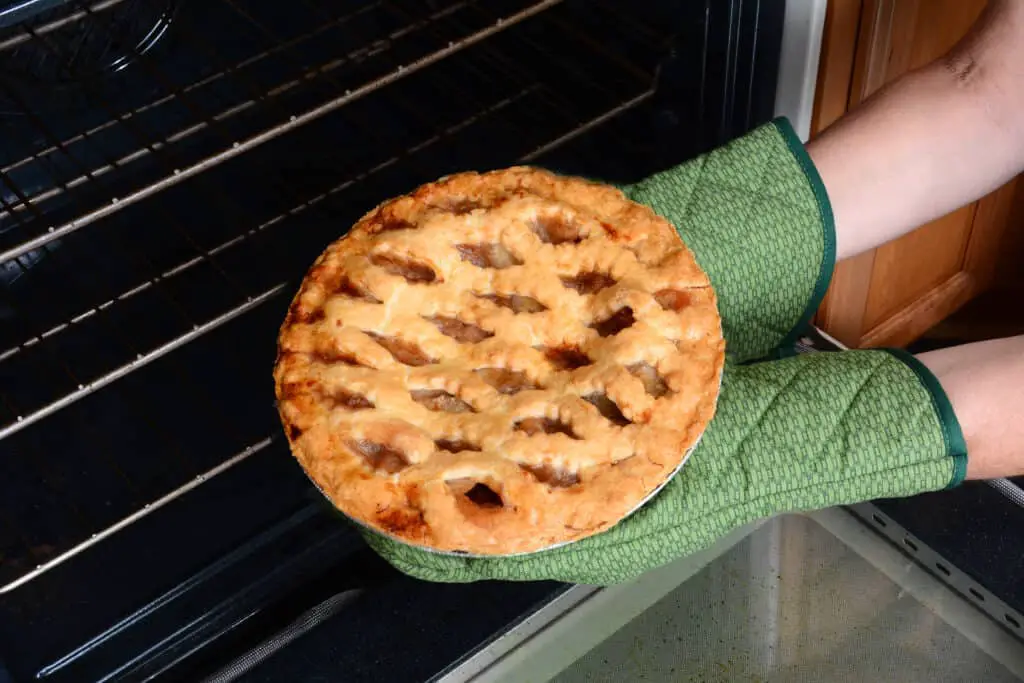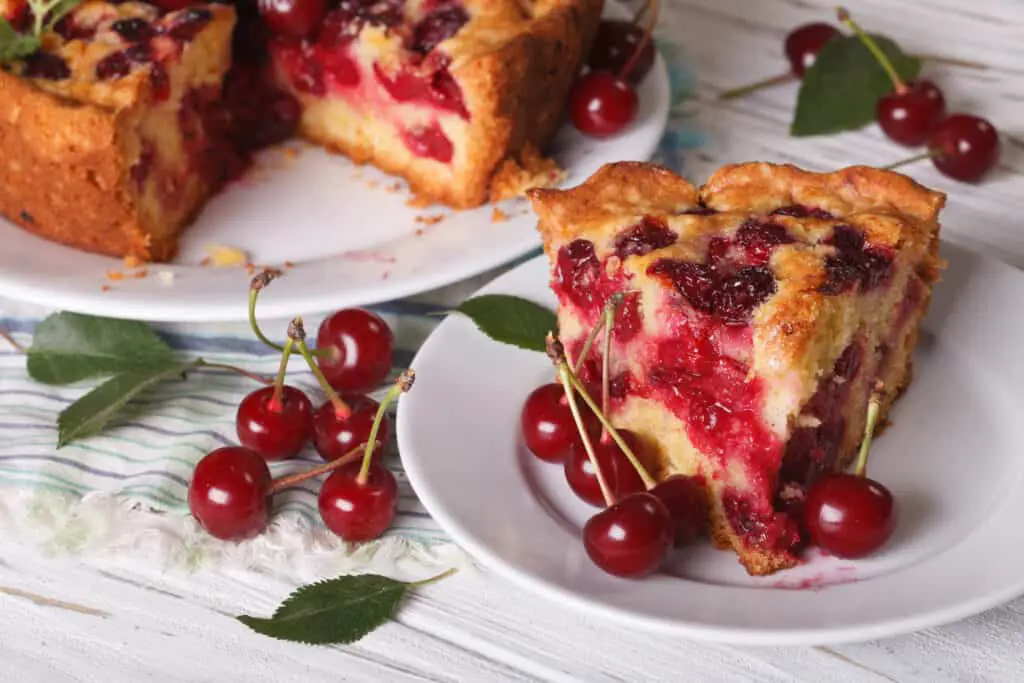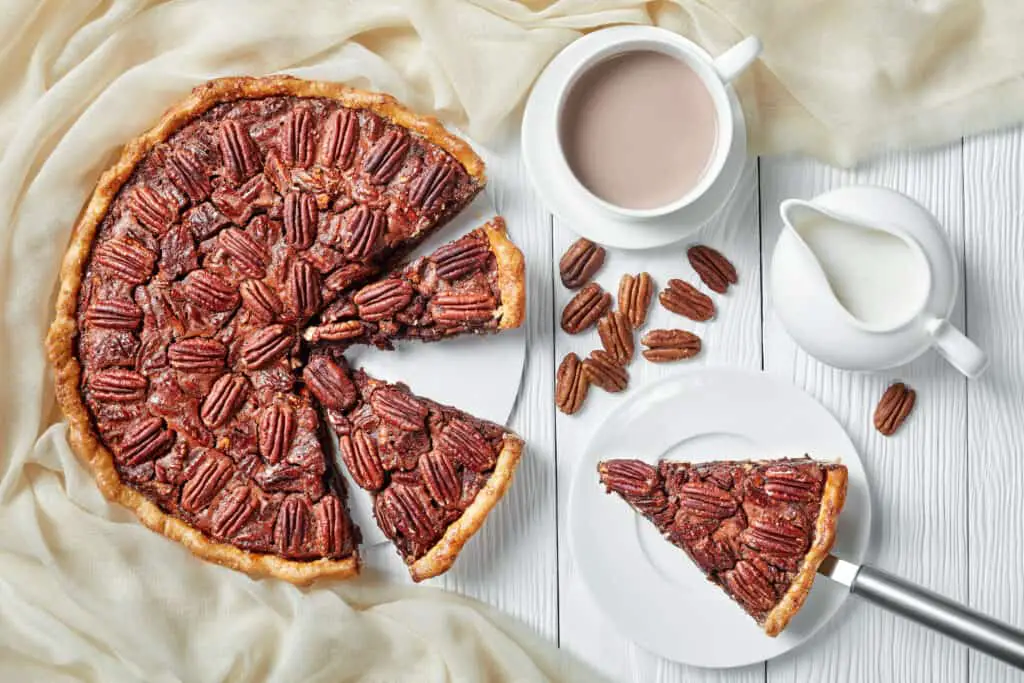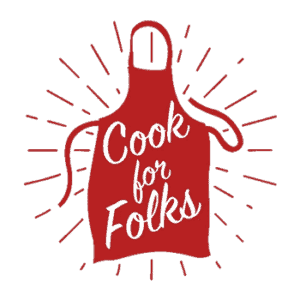This post contains affiliate links.

Everybody loves to eat pie, whether it’s Halloween, Christmas, Thanksgiving, or just any other time of the year. Naturally, it would make sense that you’d want your pies to be perfectly perfect. To get that kind of perfection, should you be careful of which rack you place your pie on in the oven?
When baking pies, it is often advisable to bake them on the bottom rack of the oven. This is primarily so the crust will be given a proper amount of cooking time and limits the possibility that it might get soggy. Most pies can be baked using either a conventional oven or a convection oven.
Want to know more? Read on to learn the truth about the pros and cons of baking in conventional or convection ovens, tips about baking pies, and much more.
The Conventional Oven

Hopefully, most of you know what a conventional oven is and use one on a fairly regular basis. Conventional ovens are user-friendly and pretty foolproof, even for the worst cooks in the kitchen. If this oven is the one you are using to bake your pies, you should be safe baking the pie on the bottom rack. As mentioned above, baking on the bottom rack will ensure that your pie’s crust becomes evenly cooked along with the rest of the pie. You won’t want a crust that is too dry or too wet.
Pies and Conventional Ovens
As far as baking tips go, that’s really all you need to know where the conventional oven is concerned. Baking on the bottom rack will provide the best baking experience for your pie and hopefully turn out some perfect pastries for you and your loved ones. If you are wondering whether or not to use a conventional oven for all your baking needs, look no further. Here are some pros and cons that should help you make an informed decision!
Pros
As mentioned before, conventional ovens are pretty much foolproof. Unlike convection ovens (which often require some special adjustments) conventional ovens will do exactly what you tell them to do. Most recipes are written with conventional ovens in mind, so it is pretty difficult to make mistakes as long as you are following the written instructions. If you are supposed to bake at 350 for an hour, then do it, and you should have a perfectly cooked pie.
In addition to that, conventional ovens are often cheaper than convection ovens. Convection ovens may have that extra heating element, but they sure do hurt your wallet a lot more than a conventional one. Plus, if you want to mimic a convection oven but still stick with the one you’ve got, you can purchase a conventional oven for just a couple extra hundred dollars. That might sound like a lot, but it is still much cheaper than the alternative, and they are usually just as efficient.
Cons
A conventional oven will usually get the job done, but there are a few concerns you may want to bring to your attention. Here are a few of them:
While this is not a terrible thing, conventional ovens will typically require more hands-on time than a convection oven will. For example, if you are cooking meat in a conventional oven, you may need to flip it now and then to get it to cook just right (you may not ever have to do this with a good convection oven). This is not necessarily a terrible inconvenience, though if you constantly have to open the oven to turn the food, you will release hot air. This means that your cooking time will be somewhat derailed and it may take a little bit longer than it would have otherwise.
Additionally, conventional ovens are slightly less reliable when it comes to cooking things evenly. The main source of heating lies at the bottom of your average conventional oven. From there, the oven relies on radiant heating to heat the entire oven compartment. This can leave cold spots in the oven and make the bake slightly unreliable. You will be able to get used to this kind of thing the longer you use a conventional oven, it just may not be as straightforward a process as you might like.
The Convection Oven
If you don’t know what a convection oven is or what it does, don’t worry. Here we will discuss how to bake pies in a convection oven as well as the pros and cons of using one.
Pies and Convection Ovens
Unlike a conventional oven, a convection oven has a fan (and exhaust system) in the back that circulates air around the oven to ensure a more even bake. The fan circulates the air and the exhaust system vents it back out. This helps the hot air to surround the food and cook it through.
A convection oven is best used when baking pies/pastries, roasting food, baking cookies (lots at a time), baking anything with a cover (like a casserole with a lid), and when toasting or dehydrating. You do not want to use a convection oven if you are baking anything like custard, souffle, bread, quick bread, or cakes. Convection ovens are somewhat less reliable with batters and can produce lopsided results if you’re not careful.
When baking pies with a convection oven, you will typically have to make a few adjustments. Because a convection oven rapidly circulates hot air, whatever you have in the oven will cook quite a bit faster. Depending on the brand of oven you have, you will most likely have to reduce the temperature in the oven by 25 to 75 degrees.
It is important that you never put a pie on top of a baking sheet in a convection oven because this will interrupt the airflow in the oven. You can put a layer of tin foil in the bottom of the oven if you are worried about spills/leaks. Start by reducing the temperature by 25 degrees (and try to avoid opening the oven when checking the pie so you don’t lose cooking time). Once you get a better feel for the temperature and how fast the pie might cook, you can adjust accordingly.

Now that you understand what a convection oven really does, now is the time to discuss the pros and cons of using one. Hopefully, knowing these will help you to understand and decide whether a convection oven is right for you!
Pros
As mentioned before, convection ovens cook things more evenly than most conventional ovens will. Because of the exhaust system and fan, convection ovens can circulate hot air throughout the entire oven compartment, making it easier for everything to bake all the way through. This is quite possibly the nicest thing about having a convection oven. Once you get it down, you will never have to worry about an overdone exterior and an underdone interior ever again.
And it’s not just about the even bake. Because air circulates and surrounds the entire dish at the same time, it not only cooks evenly but also cooks everything faster and at the same pace. Plus, when everything cooks at the same pace, that takes away the need to rotate your pans. Rotating pans is no big deal, but as mentioned before, if you open the oven door too much, it will derail your cooking time and take even longer. With a convection oven, that is no longer a concern.
Along with cooking things quickly, convection ovens can also make things crisp up better. Convection ovens are great for roasting, toasting, and dehydrating food. This is primarily because the vent removes moisture from the oven compartment which then allows things to crisp up better and faster. Doing this in a conventional oven might turn out soggier results. Fries, roasted veggies, and dehydrated fruits are especially good to make in a convection oven.
If you think about it, convection ovens are also far more energy-efficient than conventional ovens. Because convection ovens cook faster and more thoroughly, you will not have to have it on for nearly as long. This makes it more energy-efficient than several other appliances.
Cons
Before you get too excited, you should be informed about a couple of cons to owning a convection oven. First and foremost is the fact that you have to make several adjustments when baking in a convection oven, as mentioned before. This involves changing either the temperature or cooking time and sometimes both. This is not a huge inconvenience, but it can sometimes be pretty difficult to nail the perfect temperature on the nose. If you can, great. If not, it may take a little while to really understand how to use your convection setting.

Convection ovens tend to be more expensive as well. You usually will not see any on the market until you have a budget that has reached 700 dollars or more. Make no mistake, this does usually mean you are getting a high-quality product. However, if you are confused or overwhelmed about the thought of using a convection oven, you may be spending extra money on a feature that you are never going to use.
The bottom line is, don’t invest in a convection oven unless you are willing to spend the time learning how to use it properly. If you don’t think you are going to use the convection feature very often, you are probably safe to take it down a few notches and start looking at ordinary conventional ovens.
Lastly, you may or may not have to invest in some new baking sheets and or roasting pans. As mentioned before, putting a pan under your pie when baking in a convection oven can interrupt airflow and thereby disrupt your bake. Using baking sheets in your convection oven demands that they have two inches from the sides of the pan to the sides of the oven at all times. This can quickly become irritating if it means you have to restock your cookware arsenal.
Baking Pies: Dos, Don’ts, and Tips
Hopefully, you now know which oven is best for your baking needs and how to use it properly. Now is the time to learn some important baking tips. Here’s what you need to know to turn out beautiful pies.
One of the first and most obvious things to do is preheat the oven. Pies require a very specific type of baking and that can sometimes take quite a while depending on the pie. If you have the oven preheated, it will be able to start baking the moment you put it into the oven. So preheat away, and of course, bake your pie on the bottom rack. Failure to do so can result in an unevenly baked or underbaked pie crust.
If you are baking a fruit pie, you have to remember that not all fruits are created equal. Some are smaller, some cook differently, and they all have varying levels of sweetness. Make sure you taste your fillings and add enough sugar. You don’t want an overly sweet pie but you don’t want a sour pie either.

One of the most important components of a good pie is the crust. Making an excellent pie crust involves rolling the dough out at the right time and right temperature and putting it in the oven when it needs to be put there. If your pie crust dough is too warm, it will become sticky and gummy. If it is too cold, it will be far more susceptible to breaking. This might mean you will have to move your pie crust in and out of the fridge periodically to ensure it maintains the proper temperature.
Last but not least, you may want to try putting your pie in the freezer for about 15 minutes before baking. Cold butter is absolutely crucial to having a flaky crust, so allow that to chill before baking. Pie crust can be a fidgety thing, but you will find that practice, and the proper use of your oven (whether conventional or convection) will turn you into a master chef in no time. Head out and start baking!

